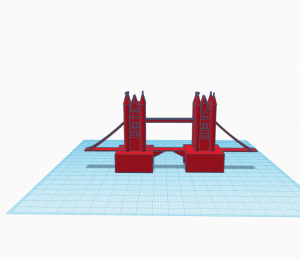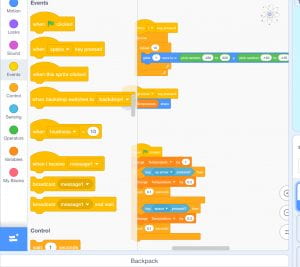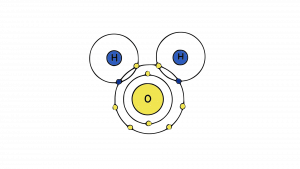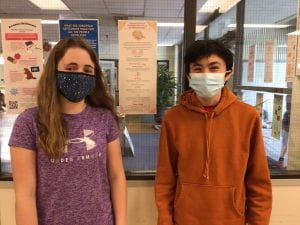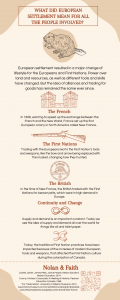
This scimatics project was called correlation vs causation. The driving question was “how are correlation and causation different”? In order to answer this question, we took many steps including creating our final product which was two correlation and causation graphs that we presented to the class last week.
We started off with a start mind map. Below you can see photos of the start mind map along with the end mind map.
Start mind map

End mind map

Next my partner and I came up with over 10 survey questions the questions we asked on our survey were.

Then with those questions and the peer critique we got from them we put the questions in a survey using google forms. Then we sent out the link to Basecamp and all the plp 9 group chats we had. While we waited for enough responses to come in we did other peoples surveys.
Clare and I got 23 responses to our survey and with that data we were able to put them in a chart with a graph attached in order to find out which two questions had correlation. Originally we thought that being an introvert or extrovert would correlate with what job you wanted to do in the future but with our data there was no correlation between those two areas.

We then changed our focus to the questions about how comfortable people are around other people with how comfortable you are then speaking your mind. Our second correlation was about how comfortable you were speaking your mind and how much screen time a person had on the average in a day.
We not only found correlation with our first graph but also causation. The  more comfortable you are around people the more comfortable you are in speaking your mind. Unlike the first graph, we did not find causation in the second graph.
more comfortable you are around people the more comfortable you are in speaking your mind. Unlike the first graph, we did not find causation in the second graph.
Finally Clare and I presented in front of the class in a key note presentation. I think our key note slides were good because we didn’t put paragraphs instead we had bullet points that highlighted what we said. Our presentation skills were not as strong as our slides. We kept reading off of our iPads and did not look up at the audience. I feel like I could speak more clearly and confidently in the future.
Curricular competencies
Planning and Conducting: select and use appropriate equipment including digital technologies to systematically and accurately collect and record data.
I achieved an accomplished in this competency. I conducted a survey through google forms and found two correlations using the survey results. I used Numbers app to create the graphs and I used the keynote to present my results to the class. One graph was a weak positive correlation while the other was a weak negative correlation. Clare and I were not able to find a strong correlation with the data we collected.
Communicating and Representing: use mathematical vocabulary and language to contribute to mathematical discussions.
I achieved an extending in this competency as I used mathematical verbal and pictorial explanations that helped the class understand the data. Clare and I  were able to successfully explain how one of the graphs had both causation and correlation while the other one did not have causation. We showed the difference between correlation and causation and how correlation is sometimes falsely associated with causation. We used a funny cartoon to help make our point.
were able to successfully explain how one of the graphs had both causation and correlation while the other one did not have causation. We showed the difference between correlation and causation and how correlation is sometimes falsely associated with causation. We used a funny cartoon to help make our point.
Applying and Innovating: contribute to care for self, others, community, and world through collaborative approaches.
I achieved an accomplished on this competency by conducting good, ethical surveys, using my class time efficiently, and being partners with Clare. First of all we made the survey anonymous so people feel more comfortable being honest in the survey. Then Clare and I used our class time well and went to LAC as needed. We met early a couple mornings to work on our project and we would FaceTime to create our graphs and prepare for the presentation. One time she was in a meeting and I did not post the survey until she had read it over and we talked about it. We both can give our opinions and if we disagree we compromise or ask for a third person’s opinion.
It was challenging to find correlations. I did not think it would be too hard but as we read the data our original ideas did not correlate. I learned that the questions I ask are important to ask well and that you need be open to look for other correlations and other factors. Presenting is also hard for me. Clare and I made good slides but we were very nervous and did not speak clearly. It would be interesting to conduct more surveys in the future to see what else I could learn.
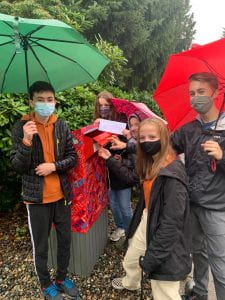
 called “Turtle’s Song”.
called “Turtle’s Song”.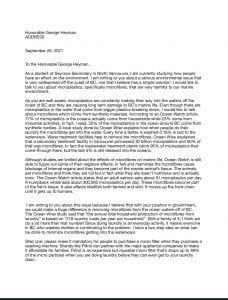


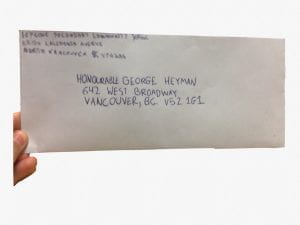
 Something I found very amusing was the fact that almost NOBODY in our
Something I found very amusing was the fact that almost NOBODY in our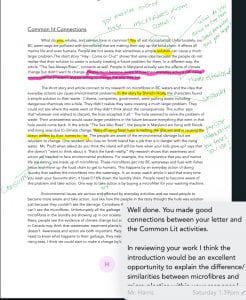

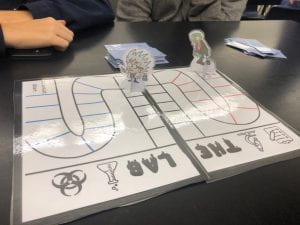 the scientist gets to the lab first she can mass produce the cure and save the world. If the Zombie gets to the lab first, he would destroy the Scientist and the Zombie’s would win. This is a two player game that lasts about 10-15 minute and uses exponent laws to decide who moves forward.
the scientist gets to the lab first she can mass produce the cure and save the world. If the Zombie gets to the lab first, he would destroy the Scientist and the Zombie’s would win. This is a two player game that lasts about 10-15 minute and uses exponent laws to decide who moves forward. clear, and simple. The first person to get an equation right moves forward one space. The point system wasn’t just earning points it was about using the equations to move towards a goal. The conditions to win were effectively designed.
clear, and simple. The first person to get an equation right moves forward one space. The point system wasn’t just earning points it was about using the equations to move towards a goal. The conditions to win were effectively designed. is a speed factor to get to the end before the other player making it a fun competition. I had one page of clear and complete instructions with lots of pictures and examples. I think I only earned an accomplished not an extending because I only used 4 exponent laws which was the minimal amount. Even though we didn’t have turns, there were rounds and at least one exponent law was used in every round.
is a speed factor to get to the end before the other player making it a fun competition. I had one page of clear and complete instructions with lots of pictures and examples. I think I only earned an accomplished not an extending because I only used 4 exponent laws which was the minimal amount. Even though we didn’t have turns, there were rounds and at least one exponent law was used in every round. partner. We both had ideas that were used in the game. We did trials with game ideas to see what would work and we divided up tasks well according to our schedules and talents. I left the drawing to her but I got all the equations organized. We didn’t have a problem staying on task and focused on the game throughout the project.
partner. We both had ideas that were used in the game. We did trials with game ideas to see what would work and we divided up tasks well according to our schedules and talents. I left the drawing to her but I got all the equations organized. We didn’t have a problem staying on task and focused on the game throughout the project.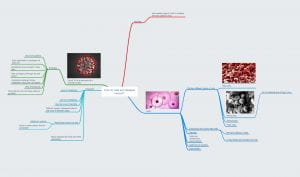


 I read the materials and watched the video that was needed to complete milestone 3. I also participated and loved the experiment that Mr. Gross set up in class with the beakers and learning how to track who had the virus. This sustained my curiosity about cells and diseases and I tracked who had had the virus on my iPad as well as following with the class on the board. Lastly, I demonstrated this competency by using my class time efficiently and then coming in to flex block to make sure I got it done well.
I read the materials and watched the video that was needed to complete milestone 3. I also participated and loved the experiment that Mr. Gross set up in class with the beakers and learning how to track who had the virus. This sustained my curiosity about cells and diseases and I tracked who had had the virus on my iPad as well as following with the class on the board. Lastly, I demonstrated this competency by using my class time efficiently and then coming in to flex block to make sure I got it done well. using diagrams to show the inside of an animal cell. Lastly, I showed this competency by using different apps to represent the science I am learning. Apps like Comic Life 3, where I put together all the panels of my comic to make the finished product. I also used Sketches Pro to draw and create the images included in my comic book. These technologies help me present the problems and solutions of this scientific topic of Cells and how they are affected by disease.
using diagrams to show the inside of an animal cell. Lastly, I showed this competency by using different apps to represent the science I am learning. Apps like Comic Life 3, where I put together all the panels of my comic to make the finished product. I also used Sketches Pro to draw and create the images included in my comic book. These technologies help me present the problems and solutions of this scientific topic of Cells and how they are affected by disease. showed how I researched and then applied how it could be spread. I was specific when I said it would at least 7 days until the person saw visible signs of infection. Also when I showed that it would cause a world-wide pandemic, it showed I knew the material and could apply it to my comic book. I evaluated the research and then put it together in a very interesting and scientific story. The cells and the virus acted in a scientific way by how the virus replicated and by how the cells would react.
showed how I researched and then applied how it could be spread. I was specific when I said it would at least 7 days until the person saw visible signs of infection. Also when I showed that it would cause a world-wide pandemic, it showed I knew the material and could apply it to my comic book. I evaluated the research and then put it together in a very interesting and scientific story. The cells and the virus acted in a scientific way by how the virus replicated and by how the cells would react.

